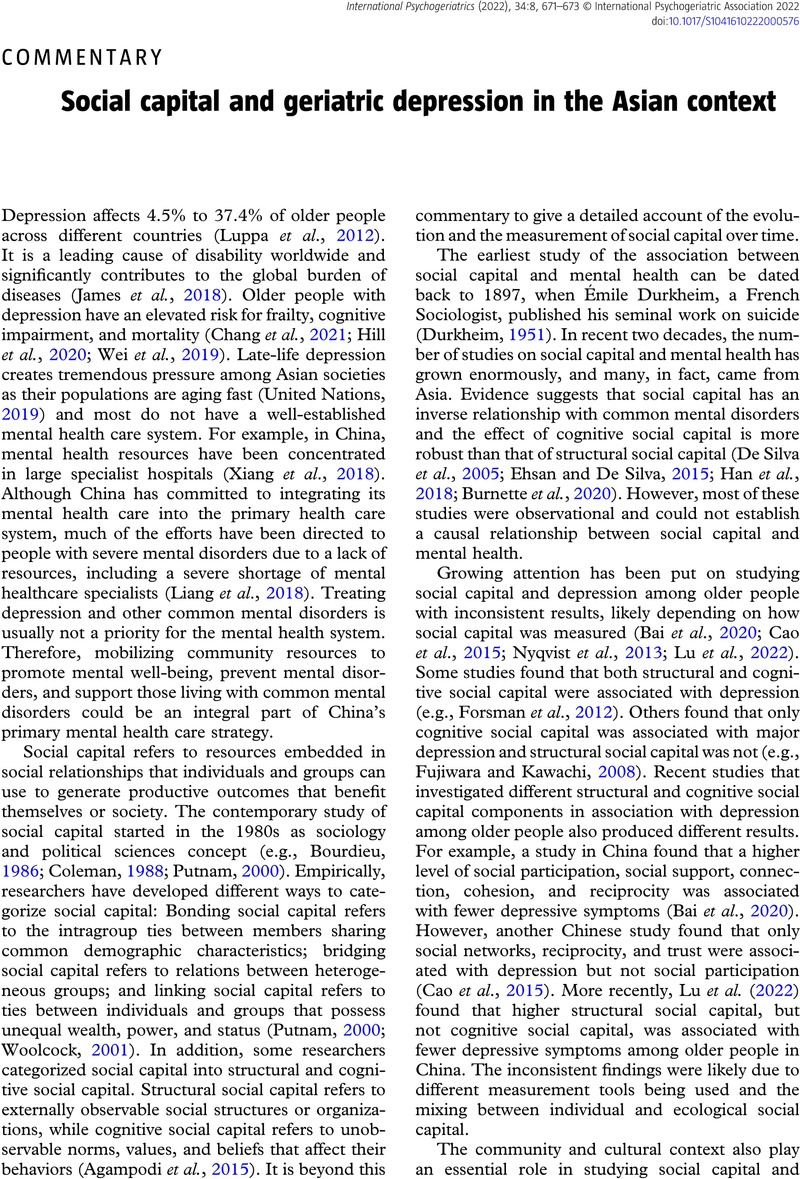Crossref Citations
This article has been cited by the following publications. This list is generated based on data provided by Crossref.
Li, Xiying
Zhang, Ronghong
and
Pi, Zhongling
2023.
The later-life depression in nursing homes compared with private households.
International Psychogeriatrics,
Vol. 35,
Issue. 2,
p.
55.
He, Michelle Sok I
Lam, Agnes Iok Fong
and
Wong, Paul Wai Ching
2024.
The association of social capital and mental well‐being among older residents living in public housing in Macau Special Administrative Region (S.A.R.) – A qualitative case study of Seac Pai Van.
Asian Social Work and Policy Review,
Vol. 18,
Issue. 1,



